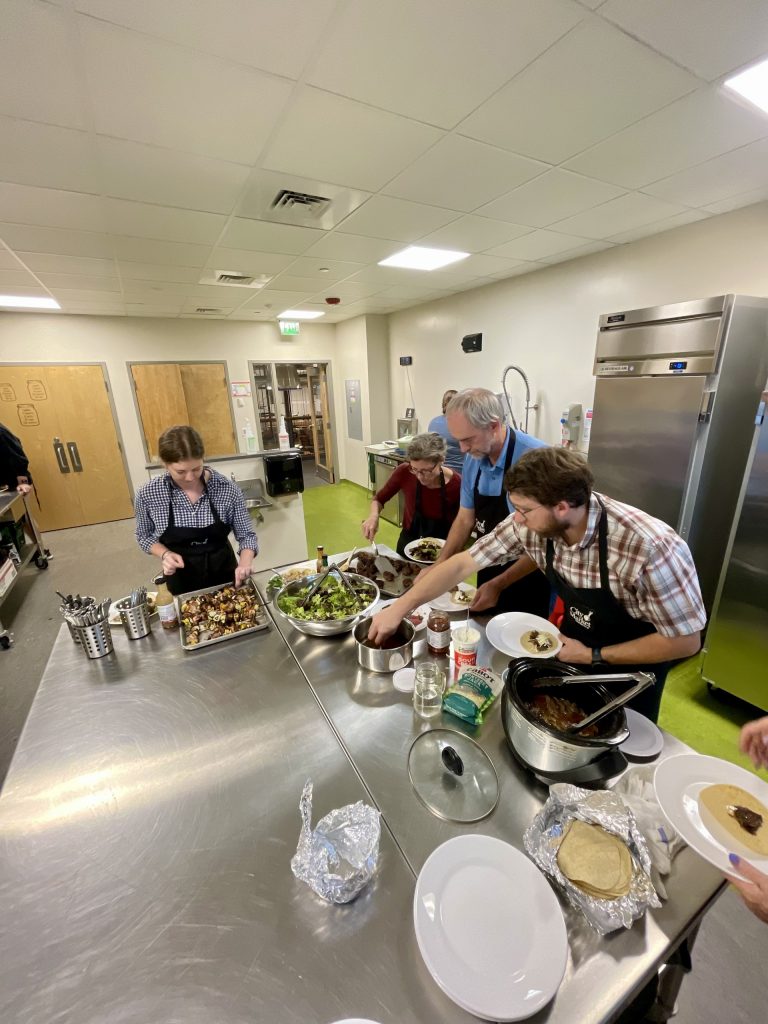Sharing the Harvest: NWTF Event Sparks Interest in Wild Game Cuisine
As the NWTF’s new Forests and Flocks Initiative ramps up to increase conservation efforts and build public support for hunting across the Northeast, an NWTF wild-game tasting class in Burlington, Vermont, dovetails into the new initiative and illustrates how food unites us all.
Other than one participant, none of the other attendees had hunted before, but that did not quell their curiosity.
“We are right here at a grocery store where everything is brought to us,” said Walter, one of the event attendees. “I like the whole idea of eating close to the land and eating locally…I think that if we eat meat, we ought to know where it is coming from, how to procure it and how to cook it, so it’s just super important, so yeah I am excited.”
When asked if he would be interested in going afield to procure his own wild game, Walter responded: “Well, yeah, absolutely.”
The event is hosted one to two times per year in partnership with the Vermont NWTF State Chapter, the Vermont Fish and Wildlife Department and the City Market Onion River Co-op.
City Market hosts numerous cooking events, and the wild-game class is always a success with full participation.
“Field to Fork style events are so important to engage a variety of people who may not typically be involved with hunting or fishing programs,” said Ali Thomas, Vermont Fish and Wildlife Department director of outreach. “Sometimes we have participants come because they are interested in pursuing hunting or fishing but want to know more about the full process, including meat preparation and cooking. Others come because they love cooking and are looking for a new food adventure, and what better way to open a whole new culinary world than to begin hunting or fishing for sustainable, local food in a wild landscape.
“Hunting and fishing are fantastic ways to connect with the natural world and conservation practices, and coming together to share a meal afterward is a special way to celebrate the wild species we care so much about.”

On the menu for this year’s event were wild turkey skewers, bear barbacoa tacos, venison meatballs, fish fillets and more.
Attendees broke into two groups to work on each of the recipes, all while learning about conservation and the process of procuring wild game.
Brent Lafreniere, NWTF Lake Champlain Longbeards Chapter volunteer, led the wild turkey demonstration. Not only was Lafreniere able discuss the how-to’s of cooking wild turkey, but he was able to talk about how he harvested each of the two birds, discussing the distance they were shot from, how he called them in and more.

Lafreniere had no shortage of questions from the attendees—attendees were interested in the type of firearm Lafreniere used, how he called them and the overall process of hunting wild turkeys.
The group of cooks were also surprised to learn of the wild turkey’s immense restoration story, especially in Vermont. With wild turkeys being abundant throughout the state, many couldn’t believe that wild turkeys were completely extirpated in Vermont.
NWTF staff were able to discuss the translocation efforts from 1969 to 1970, totaling 31 wild turkeys released throughout southwestern Vermont that were the fountainhead for the now stable population across the state.
As all the dishes came together around the same time, participants were able to enjoy a buffet of wild-game dishes.
“Events like this are important to build public support for hunting,” said Matt Dibona, NWTF New England district biologist. “We hope that we piqued the attendees’ interest enough to learn more about how they can put some wild game in their freezer, but at the very least, we are happy to be able to discuss conservation and the integral role hunters play in conserving our natural resources.”

This event, and the many similar events across the Northeast are a part of the NWTF’s new Forests and Flocks Initiative, a 10-year landscape scale initiative designed to address the wild turkey's annual cycle needs though conservation projects, boost regional support for hunting through NWTF Education and Outreach events, and increase the organization’s voice against recurring proposed legislation that is in opposition to the NWTF’s mission. Learn more about Forests and Flocks.
